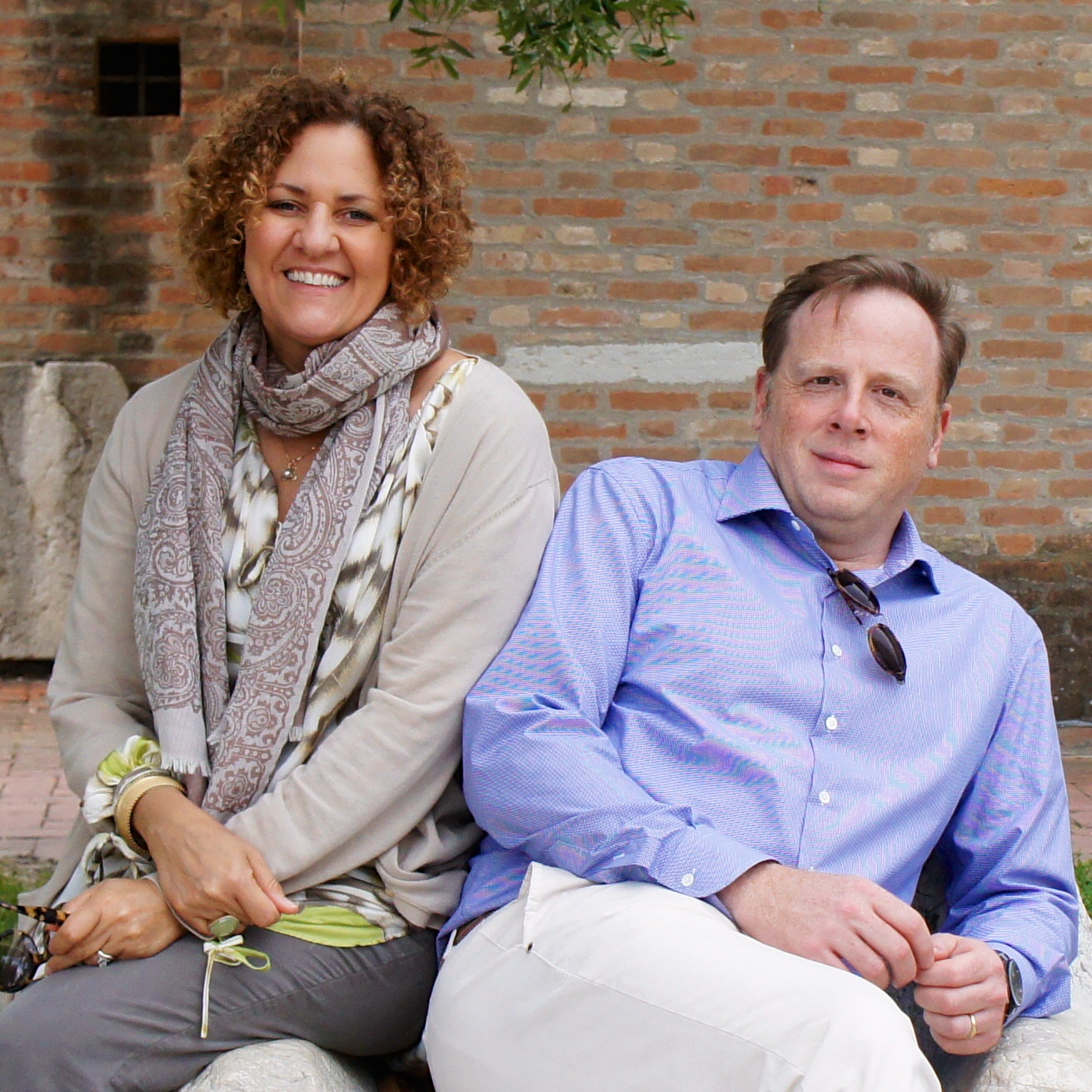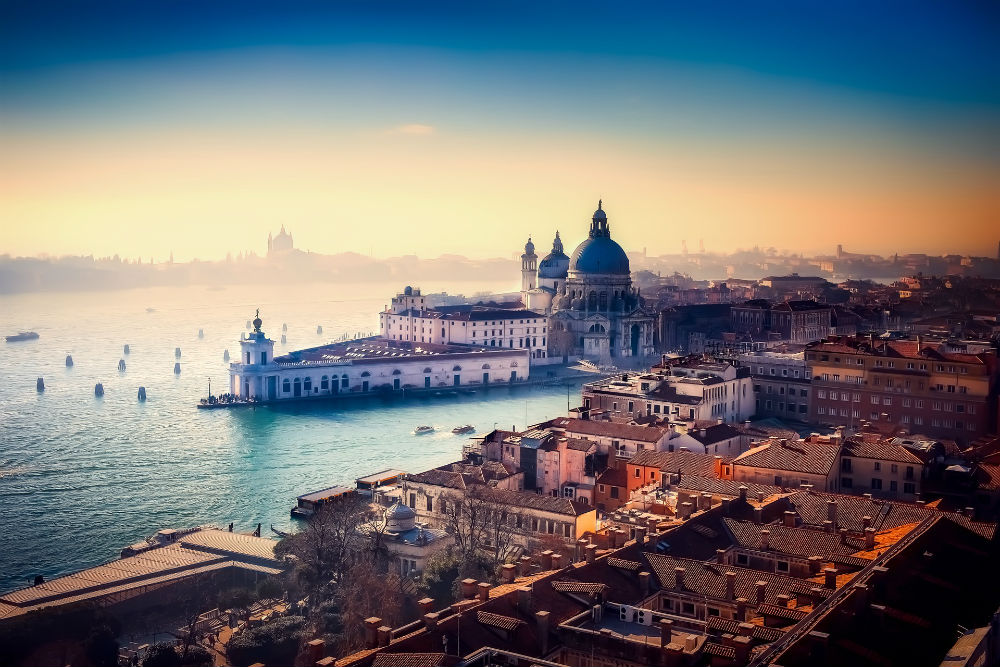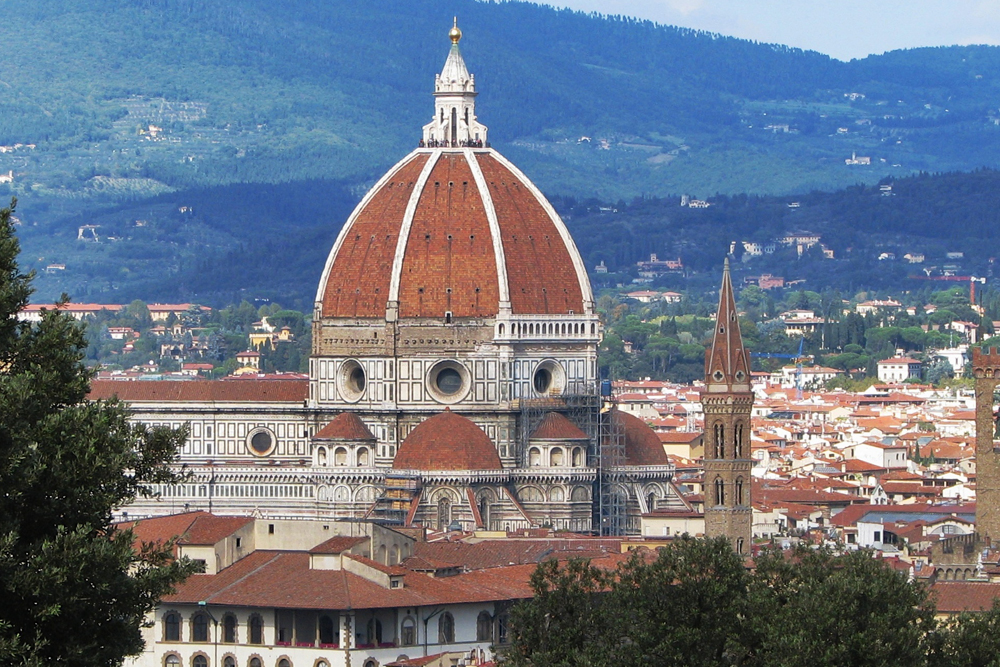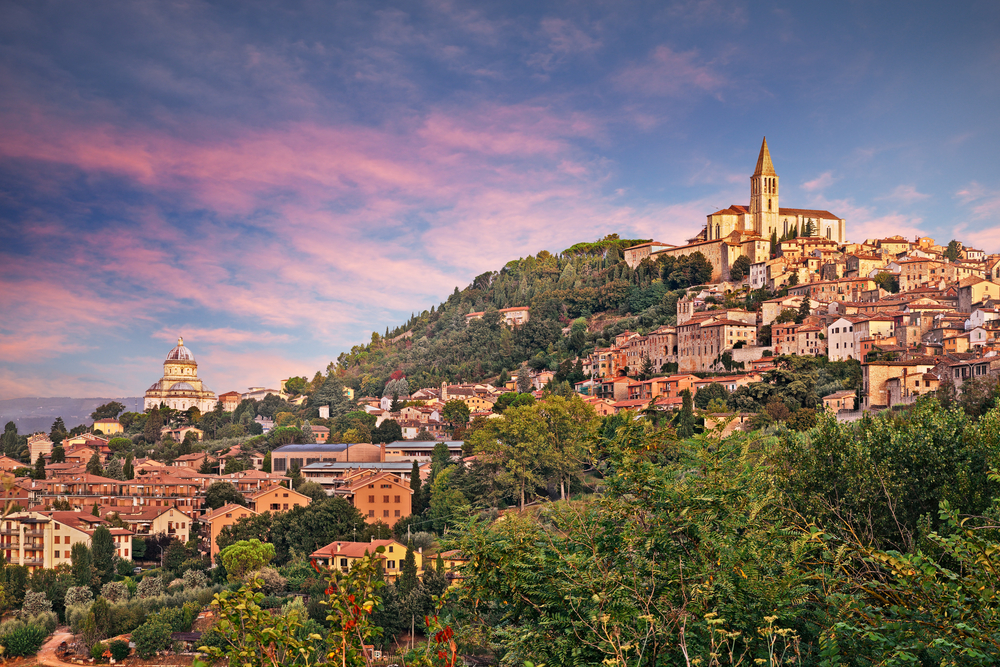Tuscany: Insider’s Guide
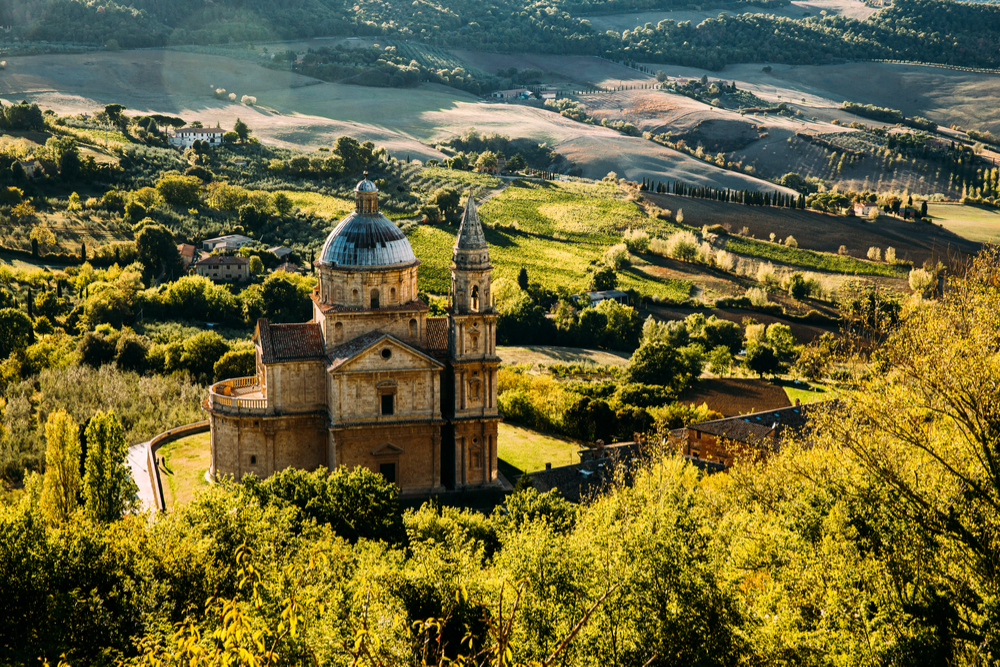 Chiesa di San Biagio, Montepulciano, Tuscany, Italy. Photo: Shutterstock
Chiesa di San Biagio, Montepulciano, Tuscany, Italy. Photo: Shutterstock
The insider advice on this page is from two of Wendy’s Trusted Travel Experts for Italy: Maria Gabriella Landers and Brian Dore of CIU Travel.
Call on Maria and Brian when you want the ultimate culinary tour of Italy, or to be matched with charming and terrifically knowledgeable private guides and drivers who have keys to doors you wouldn’t even know how to look for, let alone open. Maria has a background in art history, Brian is a former chef; they met as professional opera singers. Through this husband-and-wife team, you can gain entrée to noteworthy winemakers, charismatic artisans, secret private gardens, and the like. Maria and Brian have a home in Umbria and love to show travelers that region’s hidden charms, but they are equally comfortable making arrangements everywhere from the Amalfi Coast to Lake Como—as well as farther north into Switzerland (Brian is an enthusiastic hiker and skier who’s tested out many Alpine slopes and trails). When it comes to hotels, Maria and Brian will make sure you’re shown to the rooms with the most beautiful views in the country’s most atmospheric boutique 5-star and 4-star properties.
Where to Stay and Eat
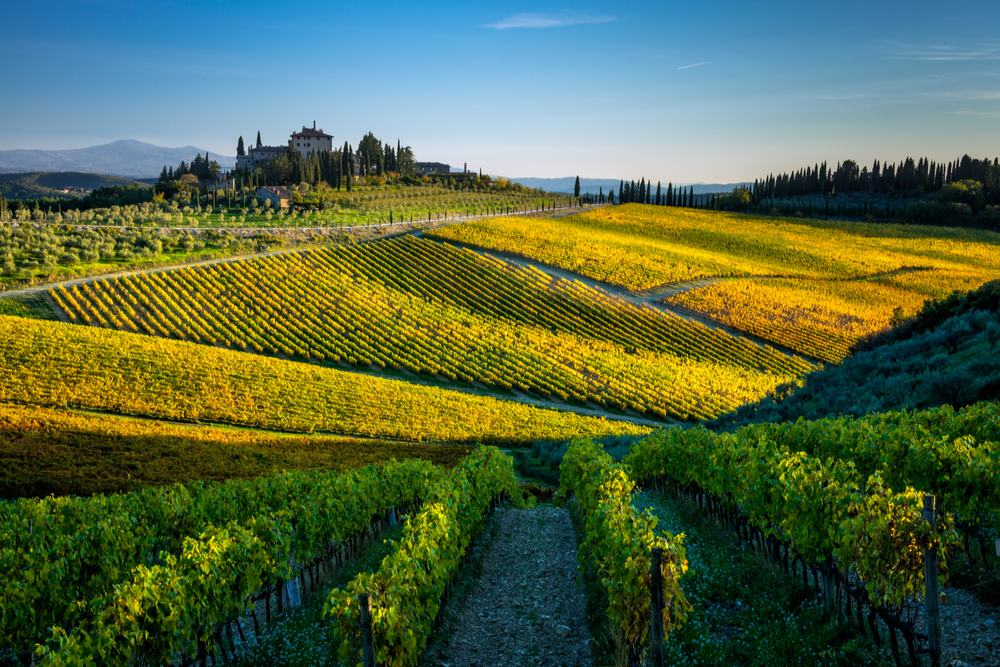
Vineyards in the Chianti region of Tuscany. Photo: Shutterstock
Best-value splurge hotels
Borgo Santo Pietro in Chiusino is a resort intimate and exclusive enough to fool you into believing you have a private Tuscan villa all to yourself. This sumptuous, 13th-century palazzo is surrounded by a sprawling private park with organic vegetable and herb gardens, and it has an excellent restaurant, spa, and pool. That said, what makes Borgo Santo Pietro stand apart is the attentive staff, so intent on your comfort that each guest is given a cell phone to call the main villa from anywhere on this vast property for drinks, food, or assistance. Though the resort is in the countryside, the tiny village of Palazzetto is just a five-minute walk away and the Abbey of St. Galgano (said to hold the sword in the stone of Excalibur legend) is just down the road.
If you want to be based in Chianti, the heavenly Villa Bordoni, perched on a hillock outside Greve, offers rustic luxury; the recently reworked COMO Castello Del Nero in Barberino Tavarnelle is a stunning blend of contemporary design and historic architecture; and the Rosewood Castiglion del Bosco, in the countryside near Siena, offers a winery, golf course, and five-star services at their clutch of high-end villas set in restored historic farmhouses.
For a bit less of a splurge but still a special treat, try the Villa Poggiano, outside of Montepulciano, or Siena’s Palazzo Ravizza; both are far enough outside of town to have a Tuscan countryside feel but close enough to easily visit the shops and restaurants (from Palazzo Ravizza, you can even walk into Siena).
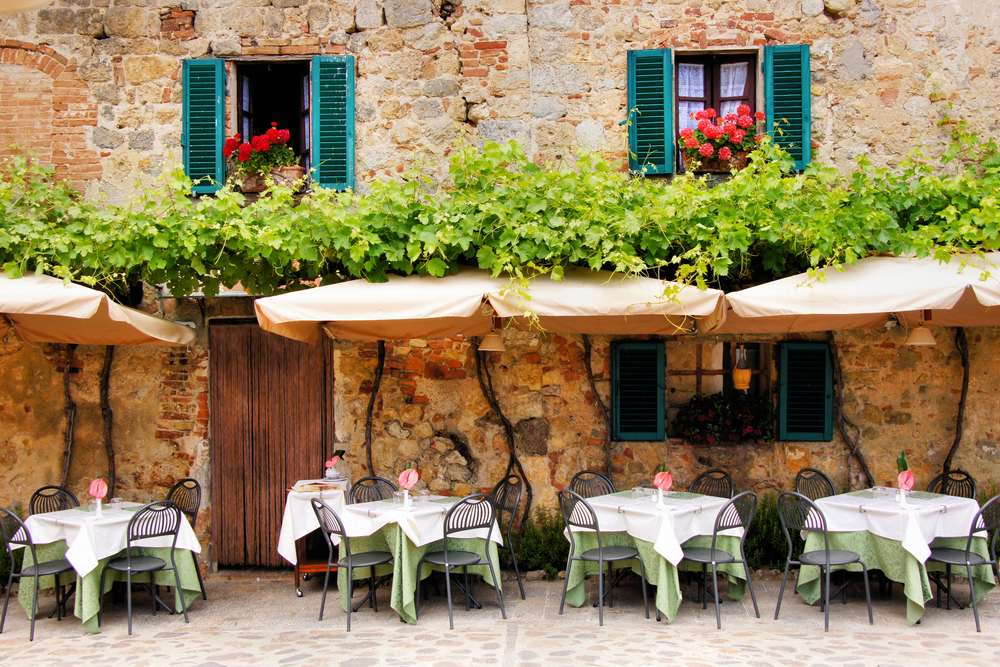
A quintessential outdoor cafe in Tuscany. Photo: Shutterstock
Restaurants the locals love
Tuscany is one of Italy’s largest regions, so it’s only natural that it would be home to equally large personalities. One of these is Dario Cecchini, effusive butcher of the tiny town of Panzano and grill-meister at his restaurant Officina della Bistecca, where barbecue is the special of the day, every day; if you can, go for the Sunday lunch meat extravaganza. For a less expensive (and a bit less theatrical) alternative, Osteria Acquacheta in Montepulciano has the authentic rustic village trattoria vibe and the simply divine (and divinely simple) food that is a hallmark of authentic Tuscan cuisine. Try the Fiorentina steak, the region’s most typical dish: a thick cut of heirloom Chianina beef, cooked on the bone and served with white beans in olive oil and rosemary.
Dishes to try
As in all of Italy’s regions, the cuisine in Tuscany is a reflection of its spirit: rustic and friendly, simple and straightforward, and deeply rooted in this land. This is the home of the family farm with grazing livestock, and thick Fiorentina steaks (see above) are a staple. Tuscans are also famously avid hunters, and wide pappardelle noodles with pungent wild boar, rabbit, and venison sauces are common on country menus across the region. If you are exploring the area near Pienza, be sure to sample some of their famed Pecorino di Pienza sheep-milk cheeses. Perhaps most emblematic of the cuisine’s reflection of the land are Tuscany’s many great wines, best sampled in their own terroir and paired with traditional local specialties.
Meal worth the splurge
Bottega del 30 is one of those restaurants you will never forget. Located in the countryside of Castelnuovo Berardenga, Franco and Elena have been providing simple, elegant cuisine since 1987. They first earned their Michelin star in 1997 and continue to offer a superior level of cuisine accompanied by an equally stellar wine cellar. Stay at the nearby Borgo San Felice and hire a car for the evening so that you can truly enjoy the experience.
What to See and Do
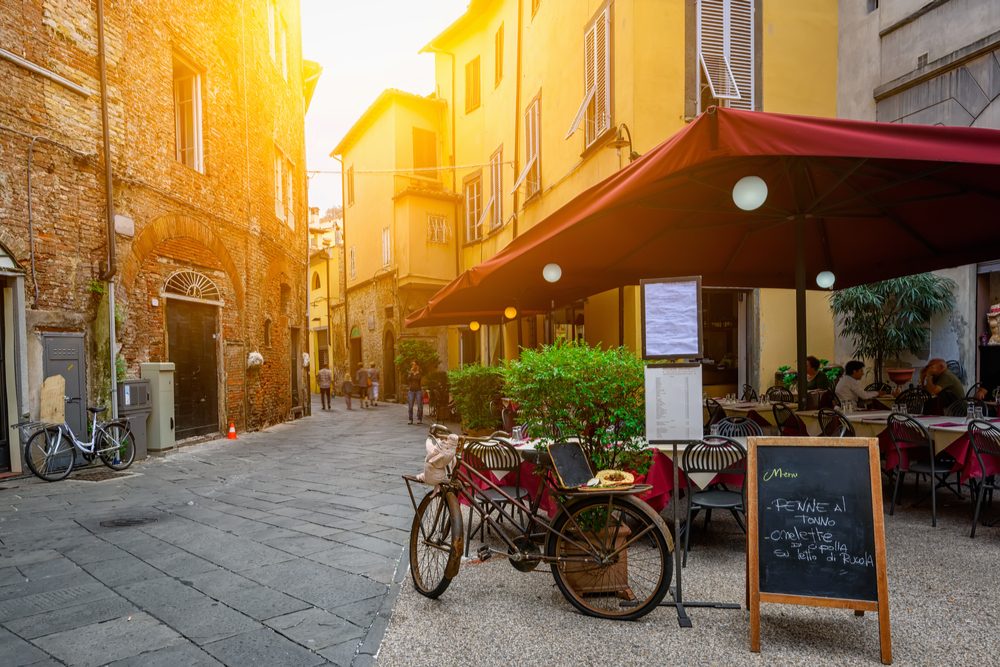
The town of Lucca, in Tuscany. Photo: Shutterstock
Don’t miss
While the rest of humankind seems to be swarming around the Leaning Tower of Pisa (see below), you get to have nearby Lucca all to yourself. This lovely Renaissance city is all that a Tuscan town should be: equally elegant and informal, with a walkable center encircled by 16th-century city walls, bike paths and beautiful countryside; full of opportunities to try the excellent local food and wine; and central enough for day trips to Pisa, the Cinque Terre, and Chianti. Music lovers will want to visit the Puccini Museum, in the house where the composer was born; gardeners will enjoy wandering the grounds of Villa Torrigiani, an aristocratic summer retreat; and shoppers shouldn’t miss Lucca’s numerous designer boutiques and artisan workshops.
Most overrated place
You should go to Pisa, if for no other reason than to snap yourself in the iconic vacation pose holding up the Leaning Tower, one of the most clichéd yet charming souvenirs for anyone visiting Italy. But once you’ve got your money shot, you are free to go. Pisa doesn’t have much else of pressing interest or importance, and the busloads of tourists there to capture that exact same photograph wear one down quickly.
Hidden gem
Almost everyone who travels to Tuscany takes time to admire Michelangelo’s majestic statue of David in Florence’s Accademia, but very few make the trip to the picturesque Apuan Alps in northern Tuscany, above the city of Carrara, where the prized white marble used to create it has been quarried for more than 2,000 years. From the Pantheon to Harvard’s medical school, Carrara marble has been the building material for some of the world’s most impressive works of art and architecture, and visitors can tour the massive open-air and underground quarries to see where these enormous blocks of stone are extracted. Pair a visit here with an excursion to the nearby mountain village of Colonnata to see how lardo di Colonnata, a spiced fatback that is one of Tuscany’s most beloved delicacies, is aged in large basins made of Carrara marble.
Cheap thrill
You could say that all of Tuscany is a slice of heaven, but if you want to get particularly close to paradise, stop in at the Sant’Antimo Abbey just south of Montalcino. Picturesque at all hours, the complex is particularly memorable during the golden sunset hour. Sit for a few precious moments to contemplate the serenity of the place and its surrounding hillsides.
How to spend a Sunday
Many Tuscan towns hold excellent antique markets in their main piazzas on a regular basis (often monthly, or seasonally), which are perfectly pleasant—though dangerous to your budget—and an excuse to while away a morning rubbing elbows with locals, good-naturedly bargaining in broken Italian and English, and perhaps even finding a tiny treasure to take home. Be careful about purchasing art or important antique furniture, which can sometimes be complicated to export, but quirky period jewelry, prints, toys, and knick knacks are there for the taking—if you can bargain your way to a fair price.
Best Time to Go
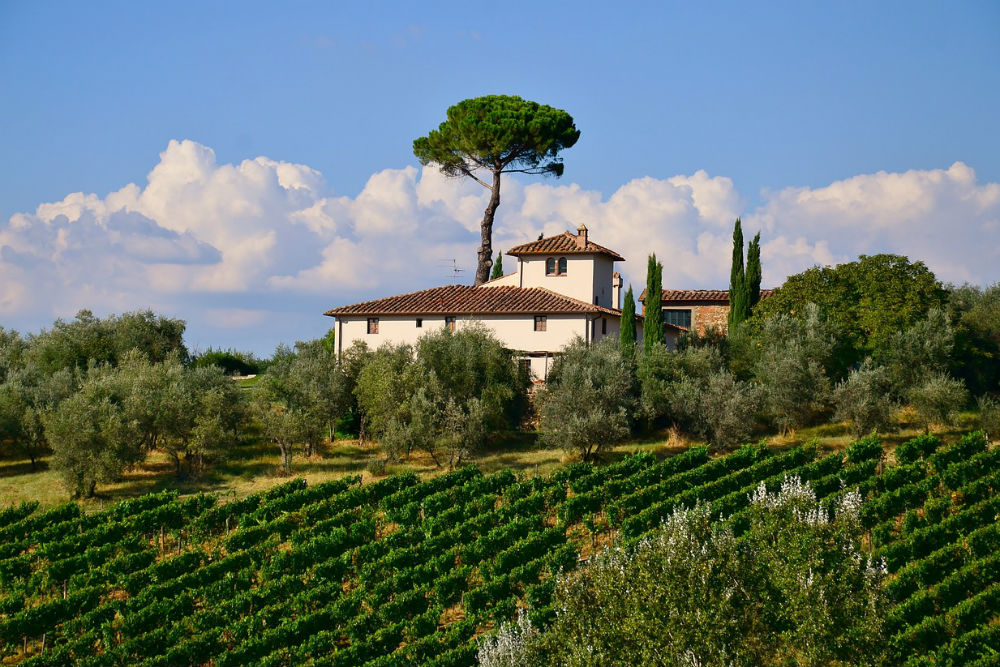
September (give or take a week, depending upon the weather), when the vineyard-covered hills across much of the region come alive for the vendemmia, or grape harvest. The rumble of small tractors rolling along the long rows of vines, the chattering of families and farm hands as they snip off individual clusters by hand, the tinkling of glasses and forks against plates as long tables are set up outdoors for everyone to take a break for lunch al fresco…these are the sights and sounds of autumn in Chianti, Montalcino, Montepulciano, and the rest of Tuscany’s wine country.
Worst Time to Go
August. The region virtually empties out for the month, as locals flock to the seaside (the only animated area of Tuscany during August is its pretty coastline), leaving the villages more or less empty, many small shops and family restaurants closed, and the hot, put-out foreign tourists to fend for themselves.
Biggest Rookie Mistake
In Tuscany, when they say countryside, they mean it. Be sure to map that Instagram-ready farmhouse or glorious wine estate carefully so you know exactly how far it is to the nearest town or A-list destinations in the region. If you are planning on a true get-away-from-it-all experience, the Tuscany countryside can be the perfect oasis—but if you would like to sightsee each day, choose your base carefully so you’re not too remote. And don’t forget to consider transportation options: There’s no calling Uber or Lyft in rural Tuscany, so either plan to rent a car or book a private driver to get around during your stay.
Don't Forget to Pack
Bring along a good printed map if you’ll be exploring the Tuscan countryside by car. Yes, GPS is great (and Google Maps has saved many a marriage), but in more remote areas GPS can sometimes trip up and a nice big map will help you second-guess perplexing directions. It’s also fun to have an old-fashioned map to spread out and get an overview of your trip or simply that day’s plans…and once highlighted and underlined, wine-splattered, and annotated, it makes for a wonderful memento.
Bragging Rights
Italy is a land of wine, but no region has wineries more storied and revered as Tuscany. Many of these historic estates have been owned for centuries by successive generations of a single noble family, and are set around private castles or villas open only to a select number of guests for private visits. Maria and Brian’s connections can gain you access to certain exclusive estates; spending a day with your host touring these breathtaking properties and sampling their prestigious wines is one of the most memorable experiences you can have in Tuscany.
Instagram Moments
If you close your eyes and think of the Tuscan countryside, a universal image comes to mind: a single country lane zigzagging up the hillside, climbing through green and amber fields, lined by imposing cyprus trees, and topped by a cloudless blue sky. To capture this image, head just south of Pienza near the famous La Foce estate, where this living postcard is relatively easy to find and photograph. From La Foce, take the Strada Provinciale 40 west for about two kilometers and you’ll spot this famous shot on your right.
If rolling fields of sunflowers are on your photo treasure hunt, visit between the end of June and early July. Arrive too early, and the flowers won’t have opened yet; just a day too late, and you will find sad, brown heads bent to the ground.
The Souvenirs
One of Italy’s most recognizable names in fine linens is Busatti, carried by high-end houseware stores from Milan to Sicily—but many don’t know that this historic textile company is Tuscan, founded and still based in Anghiari, near Arezzo. You can visit their lovely flagship store and choose from their quality kitchen, bedroom, and bath linens, still woven on antique looms from over a century ago.
For something more unusual, head to Scarperia in Mugello, a Medieval town outside of Florence with a tradition of knifemaking so long and proud that their local museum is dedicated to it. There are a number of artisan workshops and specialty stores in the town center that sell one-of-a-kind hand-forged blades; consider choosing from the especially prestigious Saladini, Berti, and Consigli brands of knives.
Many associate leather and ceramics with Tuscany, but more than 90% of Italy’s crystal also comes from this region, specifically the tiny town of Colle di Val d’Elsa. Colle has been making glass since the 12th century, and still today you can visit (and purchase from) a few traditional workshops where they blow their crystal pieces individually, or stop in the town’s ateliers showcasing work by local artisans.

